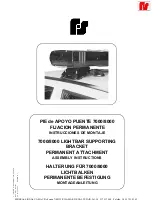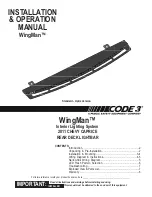
SERVICING
26 Check sparking plugs
The spark plugs should be removed and
checked every 10,000 km (6000 miles).
The electrode gap is adjusted to 0.7-
0.8 mm (0.028-0.032"). Replace the spark
plugs if the electrodes are very much burnt.
With normal driving, the spark plugs can
last for at least 20,000 km (12,500 miles).
When replacing a spark plug, make sure
that the proper type is fitted. As standard,
Bosch W 200 T 35 or corresponding of
another make should be used.
If the car is driven, for example, in town
traffic, Bosch W 175 T 35 or corresponding
can be used. The spark plugs should pref-
erably be tightened with a torque wrench.
Tightening torque is 3.5-4.0 kpm (25-
29 lb. ft.).
44
When changing the spark plugs, check
that the suppresser connectors are in
good condition. Cracked or damaged con-
nectors should be replaced.
27-28 Ignition system
The distributor contact breaker gap and
the
engine ignition timing should be
checked every 10,000 km (6000 miles).
All adjusting work should be done by a
workshop with
the
proper equipment.
The distributor is one of the most sensitive
units in the engine and careless handling
can lead to decreased engine output and
high fuel consumption or even serious
damage to the engine
Fuel
Fuel with an octane value of 100 (ROT*) is
primarily recommended for normal driving
Knocking or pre-ignition can occur if
petrol with low octane value is used. How-
ever, if highway motoring is often involved,
an octane value of at least 97 (ROT*)
should be used.
I n those countries where it is not possible
to obtain fuel with 97 octane rating, the
engine can be adjusted to a lower rating.
ROT* = Research Method.
ELECTRICAL SYSTEM
29 Check the battery electrolyte level
To ensure that the battery functions
properly, the electrolyte level should be
checked regularly. A suitable time to do
this is when the fuel tank is being filled.
The electrolyte level should be up to the
slit tubes. If the level is too low top up with
distilled water. Never add too much distil-
l ed water since this can cause the acid to
splash
over and possibly damage the
engine compartment. Never check the
electrolyte level by lighting a match. The
gases formed in the cells are highly ex-
plosive.
Содержание 164 1971
Страница 1: ......
Страница 2: ...Operating Instructions Description Servicing Reprinting permitted if source quoted...
Страница 4: ...CONTENTS...
Страница 7: ...OPERATING INSTRUCTIONS...
Страница 25: ...TECHNICAL DESCRIPTION Engine compartment...
Страница 32: ...31...
Страница 58: ...SPECIFICATIONS 57...
Страница 59: ...SPECIFICATIONS or corresponding 58...
Страница 60: ...SPECIFICATIONS 59...
Страница 61: ...LUBRICATING CHART...
Страница 63: ......
Страница 65: ......
















































